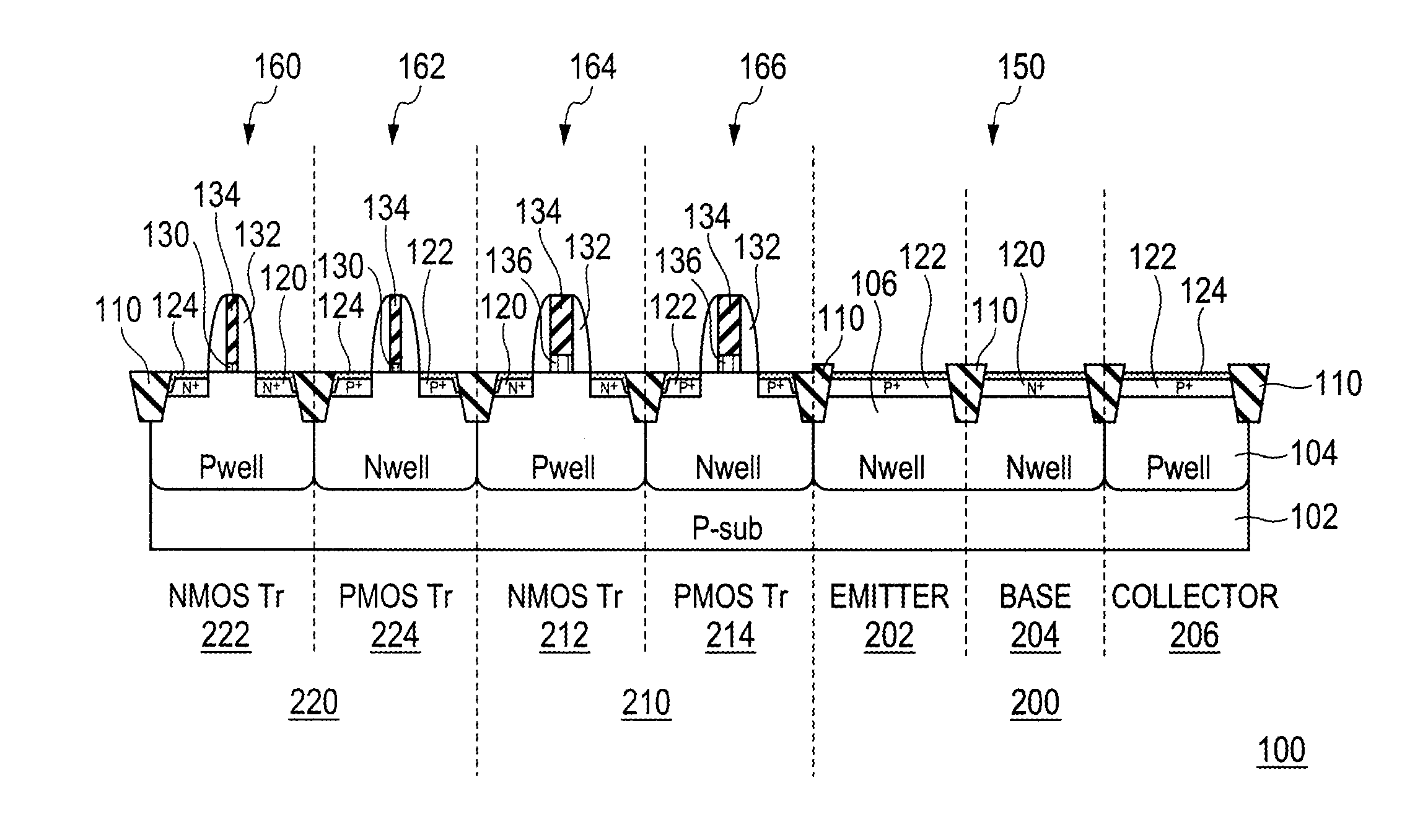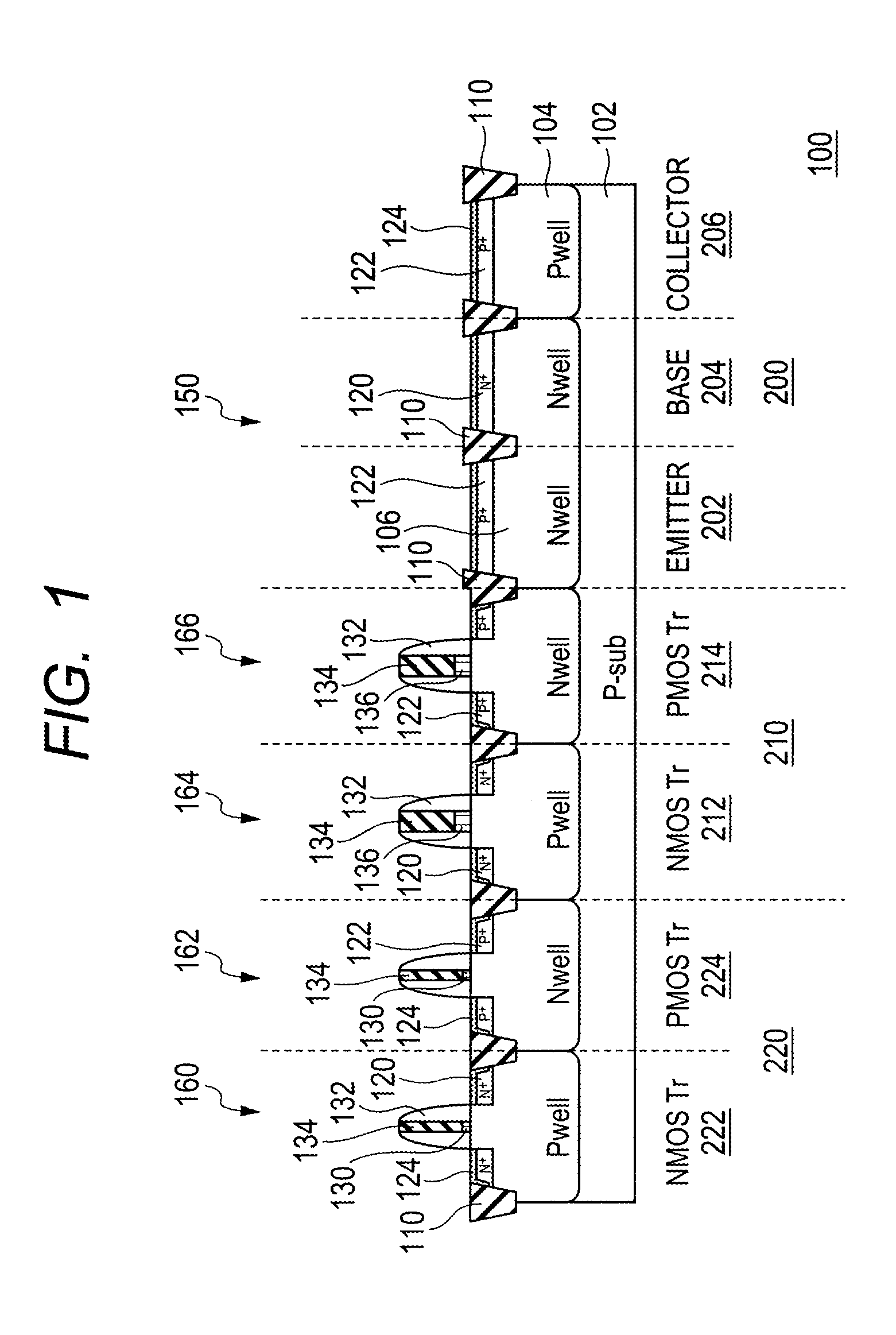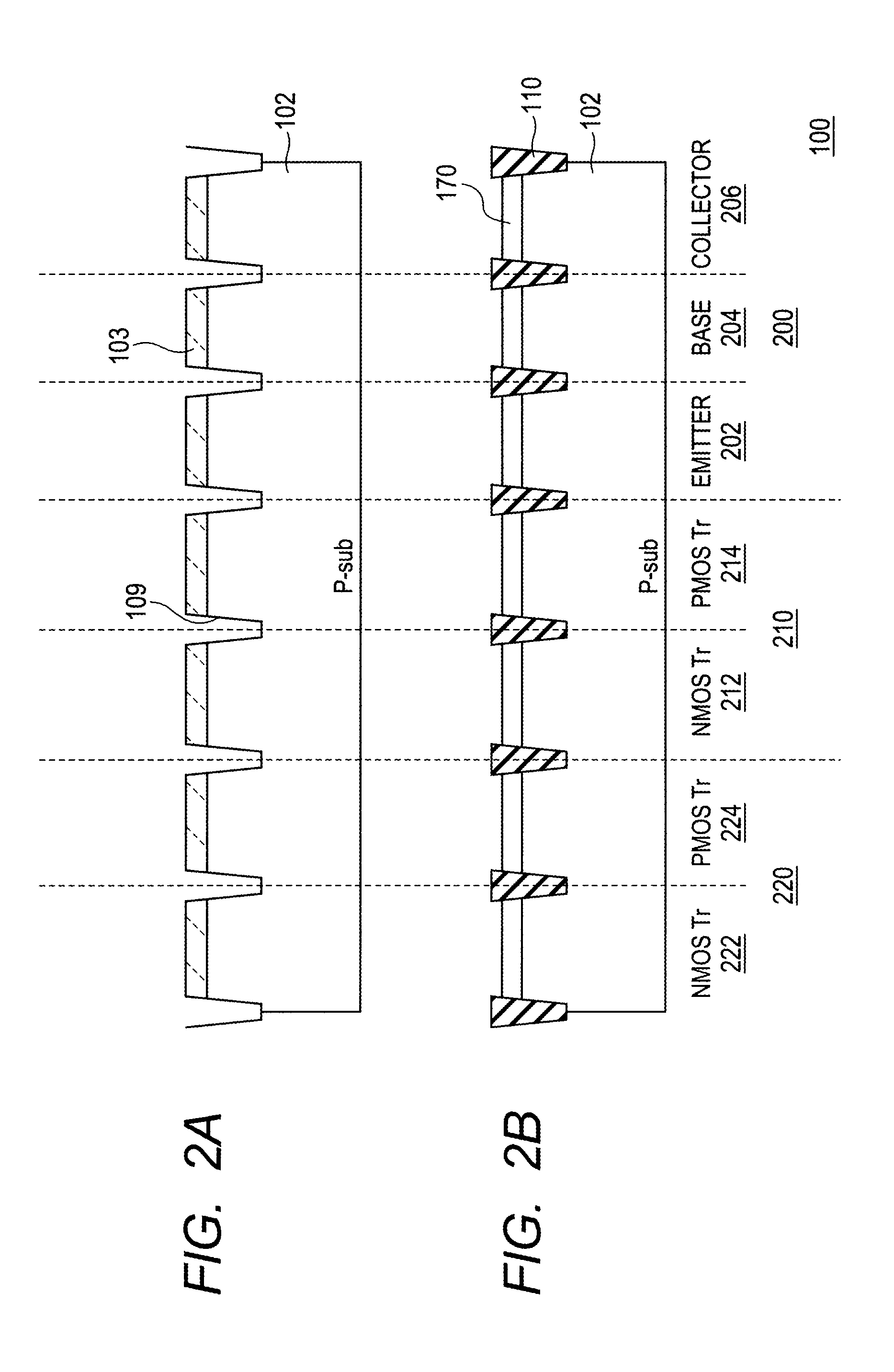Semiconductor device and production method thereof
a semiconductor and semiconductor technology, applied in the direction of semiconductor devices, electrical devices, transistors, etc., can solve the problems of silicide layer, variation of operating characteristics, and disadvantageous lowering of the device isolation film surface, so as to prevent the silicide layer from sagging, stabilize the diode current characteristics, and stabilize the emitter width
- Summary
- Abstract
- Description
- Claims
- Application Information
AI Technical Summary
Benefits of technology
Problems solved by technology
Method used
Image
Examples
Embodiment Construction
[0041]In FIG. 1, a semiconductor device 100 includes a substrate 102 comprising a MOS transistor region (a core MOS transistor region 220 and an I / O region 210) where a MOS transistor is formed; and a bipolar transistor region 200, where a bipolar transistor 150 is formed, including an emitter region 202, a base region 204, and a collector region 206. In the present embodiment, the substrate 102 can be, for example, a semiconductor substrate such as a silicon substrate or the like. In the following embodiment, the case where a first conductivity type is P-type and a second conductivity type is N-type is shown as an example, but a reverse case is also acceptable.
[0042]Substrate 102 is a P-type substrate. An N well 106 is formed in a region comprising the emitter region 202 and the base region 204 of the bipolar transistor region 200. A p-doped region 122 is formed over the surface of the N well 106 in the emitter region 202. An n-doped region 120 is formed over the surface of the N w...
PUM
 Login to View More
Login to View More Abstract
Description
Claims
Application Information
 Login to View More
Login to View More - R&D
- Intellectual Property
- Life Sciences
- Materials
- Tech Scout
- Unparalleled Data Quality
- Higher Quality Content
- 60% Fewer Hallucinations
Browse by: Latest US Patents, China's latest patents, Technical Efficacy Thesaurus, Application Domain, Technology Topic, Popular Technical Reports.
© 2025 PatSnap. All rights reserved.Legal|Privacy policy|Modern Slavery Act Transparency Statement|Sitemap|About US| Contact US: help@patsnap.com



